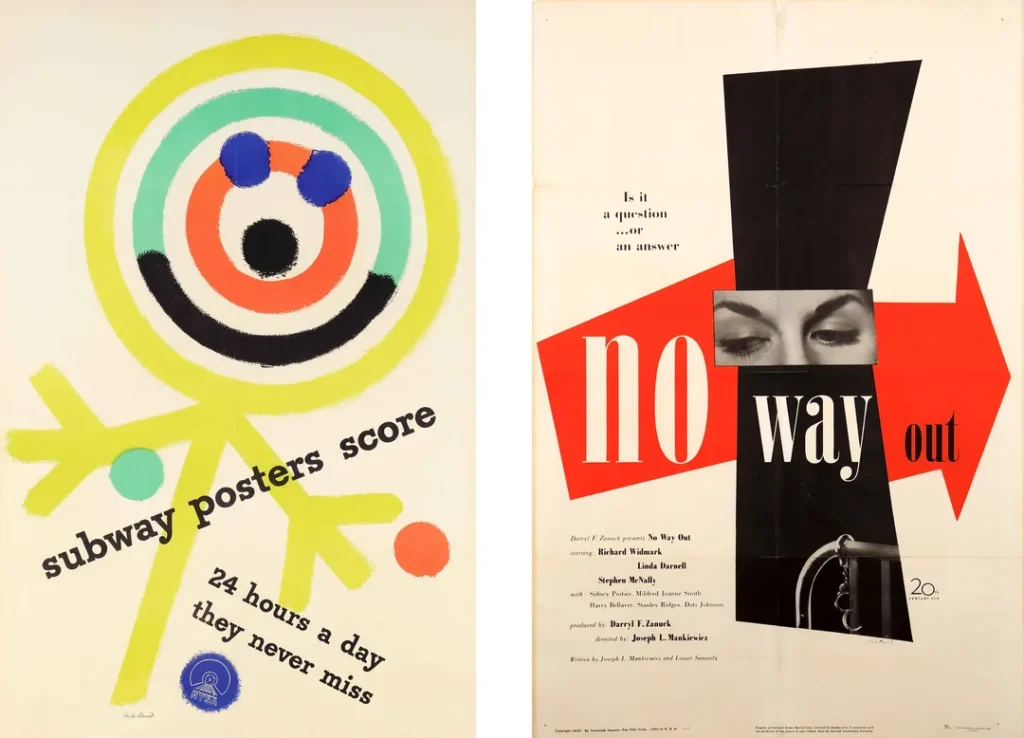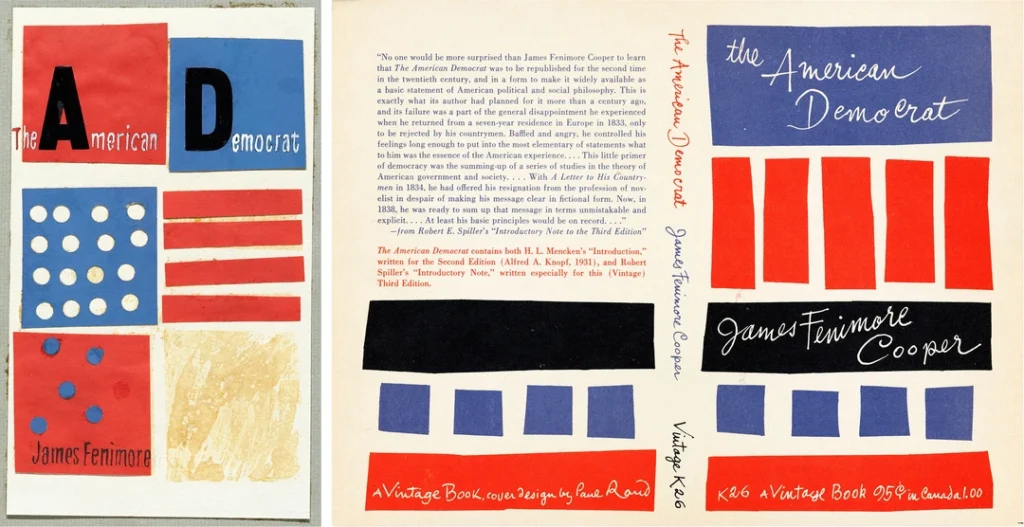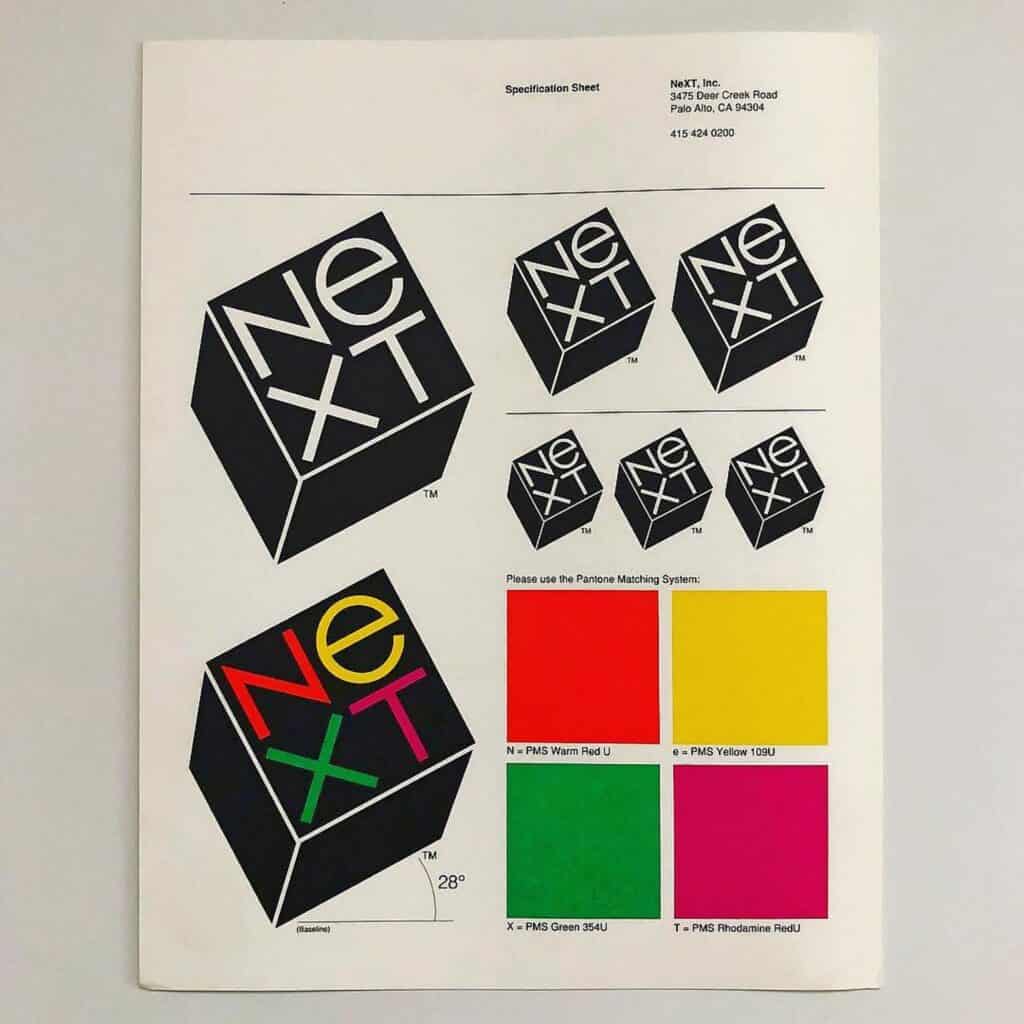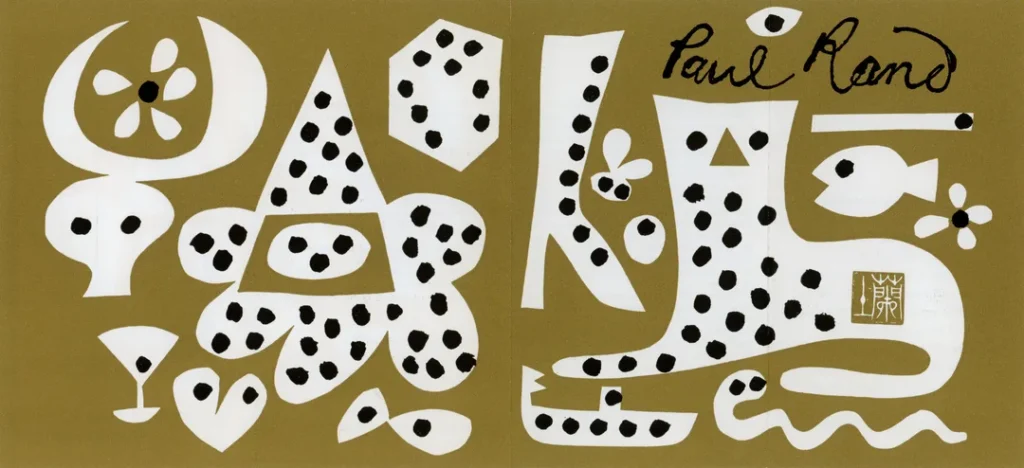Paul Rand: The Mastermind Behind Iconic Logos
Paul Rand is widely regarded as a design visionary who revolutionised visual culture in America after World War II. He played a significant role in elevating the importance of design in business and created iconic logos for major companies such as IBM, UPS, and ABC. Rand's work is celebrated for its combination of beauty and functionality, and his impact on the design industry continues to be felt today. An exhibition at the Museum of the City of New York showcases over a hundred examples of Rand's work, highlighting his enduring influence.
Paul Rand's contributions to the field of graphic design have been monumental. His innovative and forward-thinking approach to design revolutionised the industry, leaving a lasting impact that can still be seen today. Rand's ability to seamlessly blend aesthetics with functionality set him apart from his contemporaries and earned him a well-deserved reputation as a design visionary.

Born on August 15, 1914, in Brooklyn, New York, Paul Rand showed artistic talent from a young age. His journey in graphic design began with a part-time role as a stock image creator. With his innate creativity and passion for design, Rand quickly established himself as a prominent figure in the field.
Rand's early experiences and education played a crucial role in shaping his design sensibilities. He attended the Pratt Institute in Brooklyn, where he studied under influential designers such as George Tscherny and Leon Friend. These mentors exposed Rand to modern design principles, which would later become the foundation of his design philosophy.
Table of Contents
Overview of Paul Rand's Design Career

Paul Rand's design career spanned several decades and left an indelible mark on the visual landscape. He transformed visual culture in America by introducing a fresh approach to design after World War II. Rand's ability to convince big corporations that good design was essential for success was pivotal in elevating graphic design as a valuable business tool. His extensive work is showcased in an exhibition at the Museum of the City of New York, demonstrating his profound impact on the design industry.
Rand worked with various clients throughout his career, from small businesses to major corporations. His ability to adapt his design style to suit the needs of each client set him apart as a versatile and highly sought-after designer. Whether creating a logo for IBM or designing book covers for renowned publishing houses, Rand consistently delivered exceptional work combining aesthetics and functionality.

Rand's influence can be seen in the design philosophy of subsequent generations of designers. His collaboration with IBM inspired other businesses to prioritise design in their branding, realising the value of visually appealing and memorable logos. One of the most notable examples of Rand's lasting influence is his impact on Steve Jobs, the co-founder of Apple. Jobs was deeply inspired by Rand's work with IBM and sought to emulate the same level of design excellence in Apple's products.
Notable Works and Iconic Logos Created by Paul Rand
One of the hallmarks of Paul Rand's career was his creation of iconic logos for major companies. His designs are characterised by their simplicity and impact, proving the adage that sometimes less is more. Rand's most famous logos include those for IBM, UPS, and ABC. The visual identity he created for IBM, in particular, played a significant role in the success of Eliot Noyes at the company. Throughout his career, Rand continued to design and leave a lasting legacy in the design industry, with one of his final works being the logo for NeXT, for which he billed Steve Jobs $100,000.

In addition to his iconic logos, Rand also left his mark on various other design projects. His book covers, such as those for the publishing company Alfred A. Knopf, showcased his ability to capture the essence of a book's content in a visually striking and thought-provoking way. Rand's posters, advertisements, and packaging designs also demonstrated his versatility and creativity across different mediums.

Rand's ability to create impactful logos through simplicity and clarity has influenced countless designers. His approach to logo design, where he distilled the essence of a brand into a single visual mark, has become a guiding principle for designers aiming to create memorable and effective logos. The enduring recognition and relevance of his symbols, even decades after their creation, is a testament to Rand's skill and understanding of the power of visual communication.
Paul Rand's Design Philosophy and Principles
Paul Rand's design philosophy can be summarised by the mantra “less is more.” He believed in the power of simplicity and clear communication in design. Rand's designs were impactful yet minimalistic, focusing on aesthetic appeal and the ability to convey a message effectively. His book, “Thoughts on Design,” delved into his design principles and emphasised the importance of aesthetics and functionality in commercial art.
Design is the method of putting form and content together. Design, just as art, has multiple definitions, there is no single definition. Design can be art. Design can be aesthetics. Design is so simple, that’s why it is so complicated.
Paul Rand
One of Rand's fundamental principles was understanding the client's needs and goals. He believed that design should be visually appealing, serve a purpose and effectively communicate the intended message. Rand's emphasis on functionality ensured that his designs were beautiful, practical and effective in achieving the client's objectives.
Rand's design philosophy continues to be relevant and influential in graphic design. The emphasis on simplicity and clear communication has become a cornerstone of contemporary design practices. Designers today strive to create visually striking designs that are memorable and can convey a message or evoke emotion as efficiently and effectively as possible. Rand's principles serve as a guiding light for designers as they navigate the ever-evolving design landscape.
Influence and Contributions of Paul Rand to Graphic Design

Paul Rand's contributions to graphic design are immeasurable. He played a pivotal role in elevating design as a valuable tool in business. Rand merged the styles of contemporary artists into corporate work, bringing artistry and intelligence to advertising. His work empowered corporate art directors, giving them more creative control and shifting the balance of creative power from copywriters. Rand's collaboration with IBM inspired other businesses to prioritise design in their branding, and his influence can be seen in the design philosophy of subsequent generations of designers. His work with IBM influenced Steve Jobs in shaping Apple's design philosophy.
Rand's influence extended beyond his specific design projects. His teachings and writings inspired countless designers to approach their work with the same level of creativity, thoughtfulness, and attention to detail. His belief in the power of design to shape the world around us continues to resonate with designers today, who strive to create meaningful and impactful designs.
- Hardcover Book
- English (Publication Language)
- 256 Pages – 11/15/2016 (Publication Date) – Princeton Architectural Press (Publisher)
Rand's collaborations with major companies and his ability to merge artistry with commercial design have had a lasting impact on the field of graphic design. His work challenged the traditional boundaries of design and paved the way for a more innovative and artistic approach to branding and visual communication. Rand's influence can still be seen in contemporary designers who aim to create designs that capture attention and convey a deeper meaning.
Legacy of Paul Rand

Paul Rand's legacy as a design visionary is enduring. His designs and philosophy continue to have a lasting impact on graphic design. His iconic logos are still recognised and celebrated today, and his influence can be seen in the design principles of subsequent generations of designers. Rand's contributions have shaped the visual landscape and inspired designers to create impactful and aesthetically pleasing designs.
Rand's legacy goes beyond his works; it extends to how design is approached and valued in the business world. His advocacy for the importance of design in business has led to a greater appreciation for the role of designers in shaping successful brands. Rand's emphasis on the marriage of aesthetics and functionality has become a guiding principle for designers worldwide, ensuring their work looks good and serves a purpose.
The enduring influence of Paul Rand can be seen in his designs' continued relevance and impact. His iconic logos have stood the test of time and remain as influential and recognisable today as they were when they were first created. Rand's ability to create visually appealing designs and effectively communicate a message has set a standard for designers to aspire to. His contributions to the field of graphic design have shaped the industry and continue to inspire designers to push boundaries and create innovative and impactful designs.
- Hardcover Book
- Rand, Paul (Author)
- English (Publication Language)
- 240 Pages – 12/05/2017 (Publication Date) – Yale University Press (Publisher)
Conclusion: The Enduring Influence of Paul Rand
Paul Rand's contributions to graphic design, iconic logos, and design philosophy have left an indelible mark. His emphasis on simplicity, aesthetics, and clear communication inspires designers today. Exploring Rand's works and understanding his design principles is essential for any aspiring designer who wants to make a lasting impact in the industry.
Rand's ability to blend beauty and functionality seamlessly, innovative design philosophy, and groundbreaking work for major companies have solidified his status as a design visionary. His enduring influence can be seen in the creation of designers worldwide who continue to draw inspiration from his principles and strive to create visually striking and impactful designs. Paul Rand's legacy serves as a reminder that great design can shape culture and transform businesses, making him a true icon in graphic design.
Frequently Asked Questions (FAQs)
What are some of Paul Rand's most famous logo designs?
Paul Rand is renowned for designing iconic logos, including IBM, ABC, UPS, and NeXT. These logos are celebrated for their timeless appeal and impactful design.
How did Paul Rand's design philosophy differ from his contemporaries?
Rand's design philosophy emphasised simplicity and functionality. He believed in the power of clear communication through design, setting him apart from many of his peers.
What books did Paul Rand write, and what insights do they offer into his design principles?
Paul Rand authored influential books like “Thoughts on Design” and “Design, Form, and Chaos.” These books provide valuable insights into his design philosophy and creative process.
How has Paul Rand's work influenced modern graphic design?
Rand's design principles, such as the importance of simplicity and typography, continue to inspire contemporary graphic designers, shaping the industry's current landscape.
What is Paul Rand's lasting impact on design education?
Paul Rand played a significant role in design education, teaching at institutions like Yale University. His influence on design pedagogy is still felt in design programs worldwide.
Last update on 2024-06-10 / Affiliate links / Images from Amazon Product Advertising API


